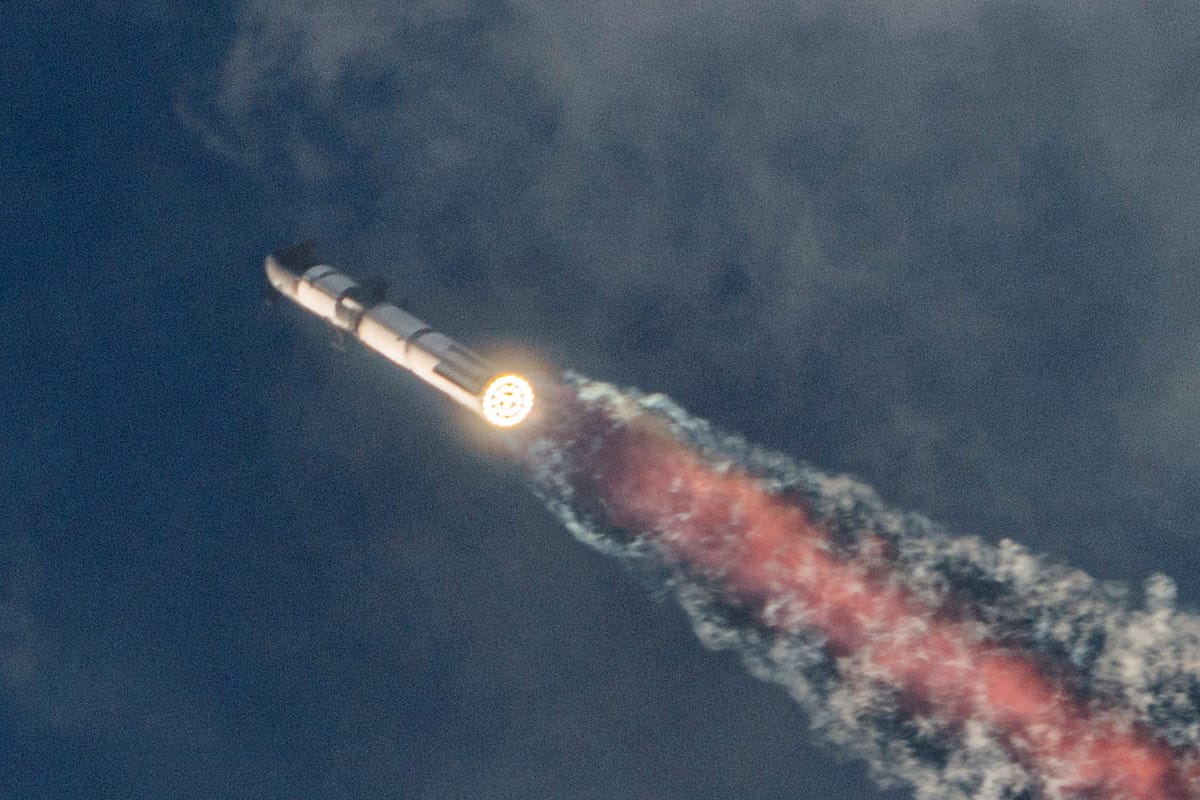SpaceX launces Starship on its third test flight
Starship went for its third test flight on Thursday from Boca Chica, Texas.

A few minutes every morning is all you need.
Stay up to date on the world's Headlines and Human Stories. It's fun, it's factual, it's fluff-free.
The backstory: Elon Musk, the household name behind Tesla, SpaceX, Neuralink and X (formerly known as Twitter), is constantly in the limelight because of his bold comments, but namely because of his business and technology ventures. With aspirations to colonize Mars, Elon Musk and his company, SpaceX, have been working on what's called Starship. It's the largest and most powerful rocket ever developed using Super Heavy boosters. It stands at 121 meters (almost 400 feet) tall and is designed to eventually refuel while in orbit and take people to the moon and beyond. Starship works in two stages, with the upper stage (the Starship spacecraft) separating from the Super Heavy rocket booster to continue into orbit.
The National Aeronautics and Space Administration (NASA) in the US is working with SpaceX and has chosen to use a modified Starship as the landing vehicle that will carry its astronauts to the lunar surface on the Artemis III mission, which aims to take off as soon as September 2026.
More recently: Last year SpaceX conducted two test launches of the Starship. Musk said that the primary goal of the early test flights is to get Starship to orbital speeds, essentially velocities quick enough to allow the spacecraft to enter a stable orbit around Earth. In April 2023, a few minutes into the first test, SpaceX had to blow up its test Starship after its two stages failed to separate. Then, in November, the second test resulted in the loss of another Starship when its booster exploded.
The development: Starship went for its third test flight on Thursday from Boca Chica, Texas, which was streamed live. It successfully flew halfway around the globe, reaching space but not orbit. But then SpaceX lost contact with the spacecraft as it re-entered the atmosphere and descended into the Indian Ocean. It's believed that it either burned up or came apart during re-entry. Despite this, Musk viewed the outcome of the flight as significant progress, posting on X that "Starship will take humanity to Mars." SpaceX has framed its goal with these test flights to be gathering data that can then be used to go back and improve Starship for future missions. The company's trial-and-error approach has worked for it before, as its Falcon 9 rockets are already integral to NASA and commercial space missions.
Starship re-entering Earth's atmosphere. Views through the plasma pic.twitter.com/HEQX4eEHWH
— SpaceX (@SpaceX) March 14, 2024
Key comments:
"The team has made the call that the ship has been lost, so no splashdown today," said Dan Huot, SpaceX communications manager, during the live broadcast. "But again, just it's incredible to see how much further we got this time around."
"I don't want to jinx it, but I think the probability of reaching orbit is good – 80%," Musk said during a recent talk posted to social media. "Certainly the third flight is a much better rocket than flights one or two."
"Each of these flight tests continue to be just that: a test. They aren't occurring in a lab or on a test stand, but are putting flight hardware in a flight environment to maximize learning," said SpaceX in a statement on its website. "This rapid iterative development approach has been the basis for all of SpaceX's major innovative advancements."




Comments ()